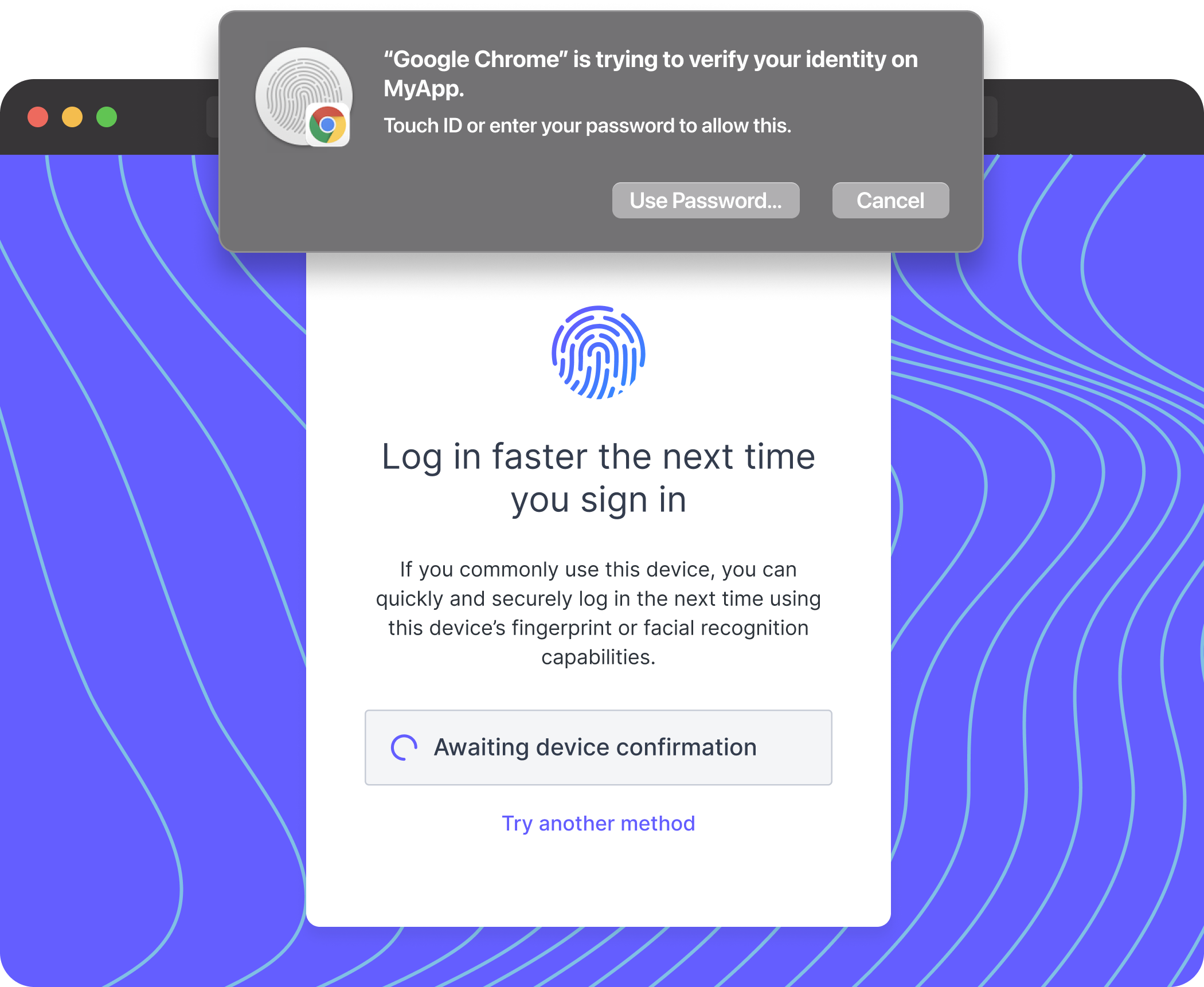In its current state, completely ditching passwords for biometric authentication would be difficult from a security
standpoint. Biometrics are typically tied to a device, so logging in from an unknown device would create some problems.
Knowing this, we decided to tackle the addition of WebAuthn as a second factor, meaning users would need to have two of
the following:
- Something you know
- Something you have
- Something you are
Something you know is something stored in your memory such as username and password. Something you have is something you
carry with you, such as a mobile device (SMS verification) or security key. Lastly, something you are is what makes you you
— commonly your face or your finger print. While we already offer the "something you have", we wanted to expand that with
security keys, as well as finally offer the "something you are".
We kicked off research by having discussions with customers who expressed interest in implementing WebAuthn into their
login experience. Our goals were to understand what features the users needed and what their expectations might be in terms
of implementation. While users were intrigued by biometric authentication, they were much more interested in security key
support, leading us to consider a more explicit approach where biometric and security key authentication are enabled and
listed as separate factors.
At the same time, we conducted a competitive analysis against other products offering security key or biometric support.
Due to being a new technology, finding products that supported this proved to be a bit tricky. We looked at these products
to find commonalities that we could first match and then find ways to improve. During this process, we discoverd a couple of
pain points that would unfortunately have no solution. Browsers/clients must integrate WebAuthn into their application, which
at the time meant not all browsers supported this new feature. On top of that, each browser supplied their own experience for
accessing the hardware (both biometric or security key), meaning when designing our experience, we needed to ensure that the
browser's experience would integrate properly with ours.



